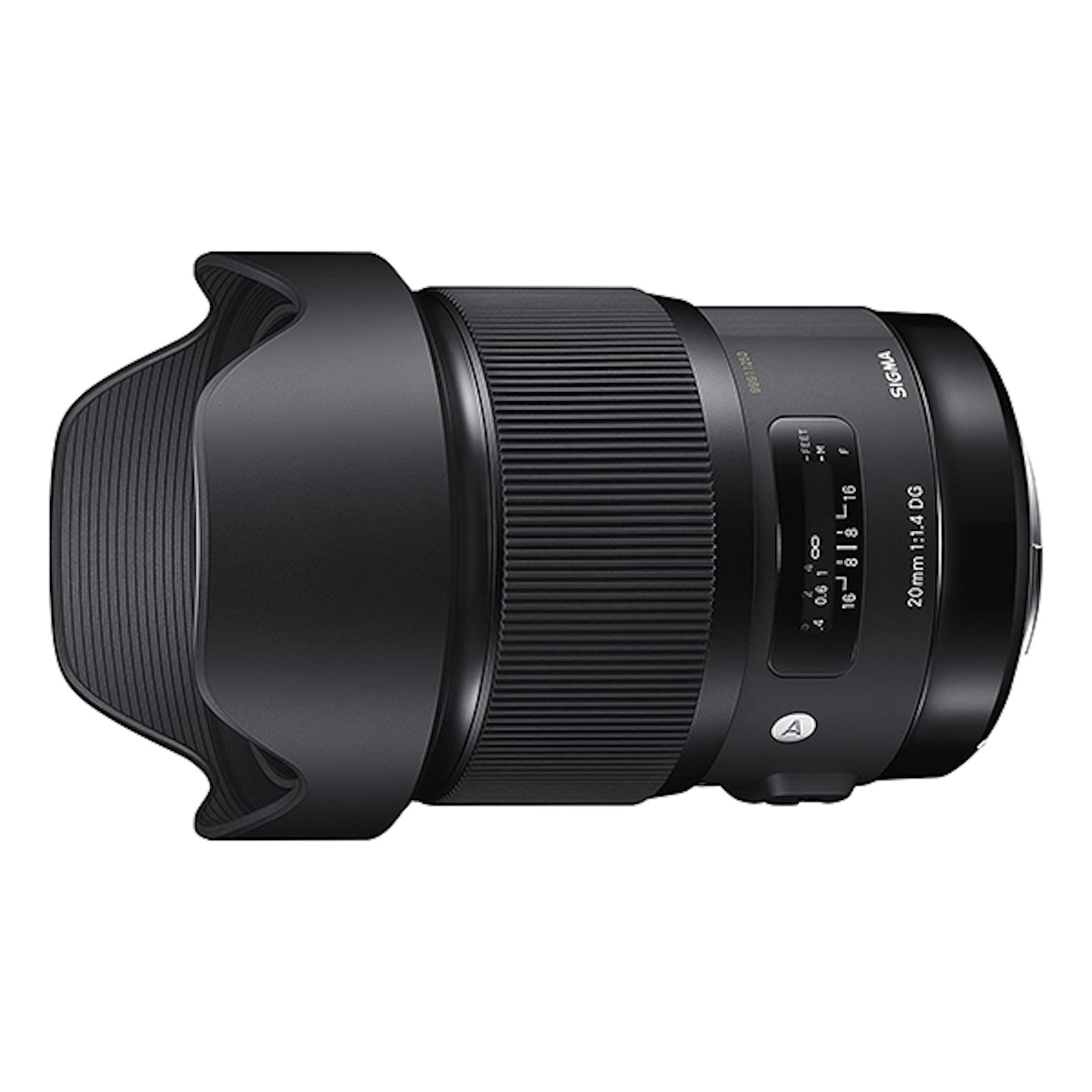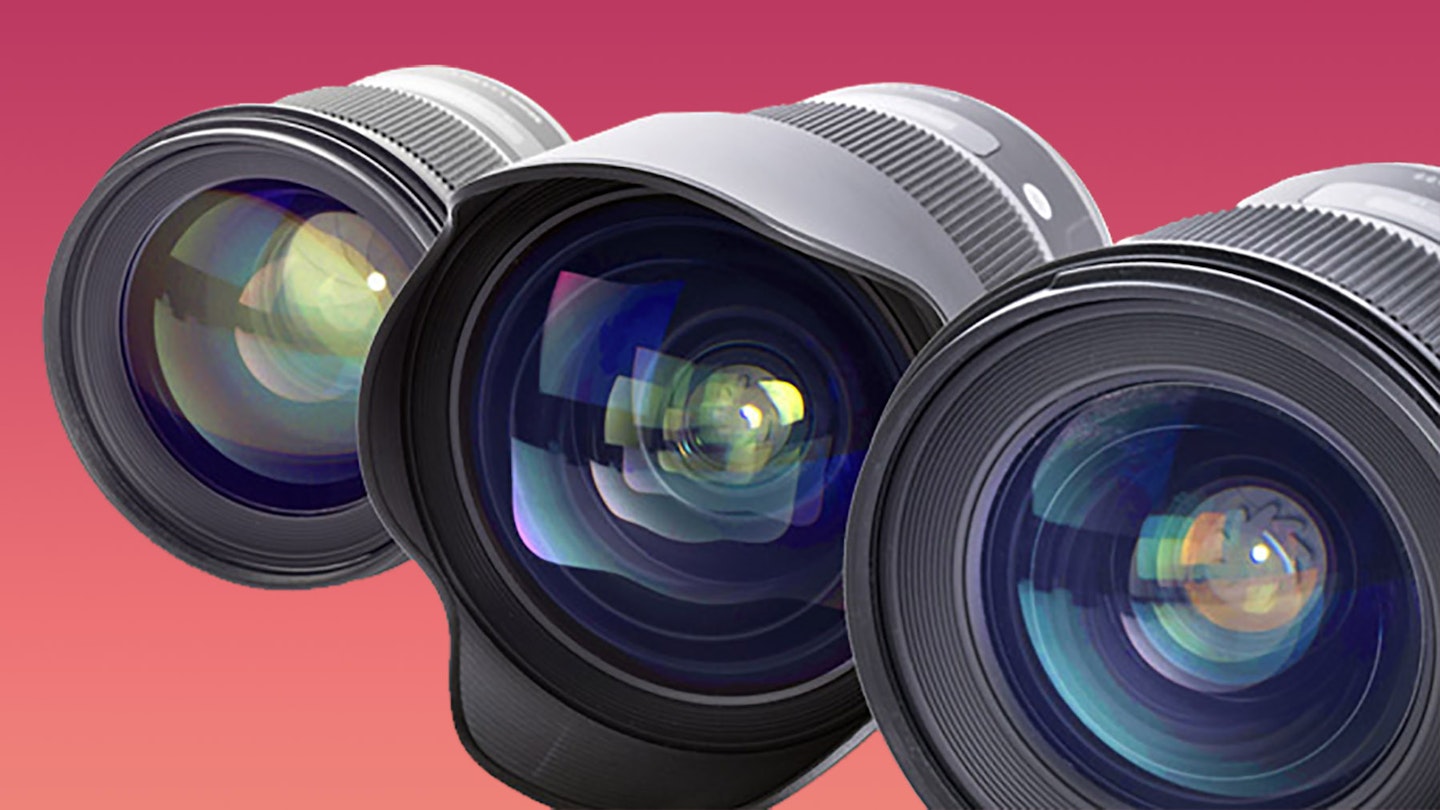Sharpness is always the key component we look for in a lens. Sure, build quality, autofocus and handling are important too, but what we really want is fantastic image quality.
So we challenged ourselves to find the ultimate affordable Sigma DSLR glass on the market, asking the independent lens manufacturer to send us its three sharpest lenses with a street price of under £1,000. We asked for primes only (ie no zoom), as the optical design of fixed focal length lenses generally results in the best image quality. Here's what we found:
Best Sigma prime lens
 1 of 3
1 of 3Sigma 20mm f/1.4 DG HSM | Art
Sigma's 20mm DG HSM | Art is the world's first prime lens of this focal length bearing a fast f/1.4 aperture. The optic comprises a serious amount of glass – 15 elements in 11 groups to be precise. This, paired with the premium metal build, means Sigma's wide prime weighs in at a fraction under a kilogram. It's also quite big for a 20mm lens, but then it does boast that wide f/1.4 maximum aperture. A focus distance window sits at the top of the barrel when attached to a DSLR and it has f/8 and f/16 markings to indicate the depth-of-field in your shot at these values. There's also an AF/MF switch on the side, which locks with a firm click and falls comfortably near the large focusing ring. This makes it easy to activate and disengage. At the front of the lens you'll find a petal lens hood, which is fixed in place and helps protect the protruding, bulbous front element from knocks and dings. As it can't be removed, it takes a slip-on lens cap rather than the clip-type and can't take conventional filters that screw in via the filter thread, as it doesn't have one. Filters can be used, but require a special slip-on holder. We compared the focus speed to its 24mm | Art sibling and found the 20mm to be slightly faster at finding its target. Details are very slightly soft at f/1.4 across the frame, though this is rectified quickly with impressive sharpness at f/1.8. There is a tiny amount of chromatic aberration and a small vignette from f/1.4 to f/2.8. There's also a tiny amount of barrel distortion, though nothing that can't be fixed in Photoshop. The overall sharpness of this lens between f/4-11 is outstanding, making it an ideal tool for shooting landscapes and astro. Spec Aperture: f/1.4-16 Minimum focus: 27.6cm Filter size: N/A Size (DxL): 90.7x129.8mm Weight: 950g Pros Rapid autofocus Close focusing distance Cons Large and heavy build Need special adapter for filters
 2 of 3
2 of 3Sigma 50mm f/1.4 DG HSM | Art
In keeping with other Sigma Art optics, the 50mm f/1.4 has a high-end, premium feel to it. Inside its heavy-duty metal barrel sits its 13 elements, arranged into eight different groups. With a weight of 815g, it's three times heavier than Nikon's 50mm f/1.4G, though it does have a large focusing ring, and its Hyper Sonic Motor (HSM) allows for a fast and precise autofocus operation. It has nine aperture blades for smooth bokeh and there's a 77mm front filter ring too. Image quality impressed, providing outstanding sharpness across the frame between f/2.8 and f/11. We found slightly soft corners and a little blooming at f/1.4, but this sharpened up quickly by f/1.8. We found no chromatic aberration or distortion, and only a small vignette at f/1.4. It's big and heavy, but Sigma's 50mm f/1.4 DG HSM | Art lens can capture amazing details. Spec Aperture: f/1.4-16 Minimum focus: 40cm Filter size: 77mm Size (DxL): 85.4x99.9mm Weight: 815g Pros Brilliant image quality Fast autofocusing Cons Quite heavy for a 50mm prime
 3 of 3
3 of 3Sigma 24mm f/1.4 DG HSM | Art
Sigma's 24mm packs 15 elements in 11 groups in the 85x90.2mm barrel. Three of these are FLD elements, four are SLD and two are aspherical – said to minimise aberration in the corners. The circular aperture consists of nine blades for smooth bokeh and can be set between values of f/1.4 and f/16. There's a 77mm filter thread around the front element allowing filters to be attached. This is different to the 20mm f/1.4 model, which has no filter thread. It's marginally lighter too. Weighing 665g, it's 30% lighter than its wider 20mm sibling. Chromatic aberration is handled well, with only the slightest purple and green hint coming through in the corners throughout the aperture range. At f/1.4, corners are slightly soft, better at f/1.8 and very impressive at f/2.8. We noted a small amount of barrel distortion and a slight vignette shooting wide-open up until f/2.8. Spec Aperture: f/1.4-16 Minimum focus: 25cm Filter size: 77mm Size (DxL): 85x90.2mm Weight: 665g Pros Bright f/1.4 maximum aperture Compact size Cons Quite heavy for a 24mm prime
The Sigma Corporation was founded over 50 years ago by lens pioneer Michihiro Yamaki. His son, Kazuto Yamaki, now leads the family-run company, with lens production remaining in Japan. Sigma Imaging UK is a subsidiary of this Japanese firm. Photographers love choice, and Sigma has built its business around providing consumers with alternative lenses to the own-brand ones.
Related: The best Fujifilm camera lenses
Third-party optics were sometimes seen as a way of saving money, with many models boasting a more attractive price-tag. But the company oversaw a huge rebranding in 2013 with the new line of Global Vision Lenses. Divided into Art, Contemporary and Sport categories, these optics have an exceptionally high-end, top quality feel to them. It’s clear that Sigma is totally focused on producing glass that competes, if not beats the own-brand models. So it’s no surprise the price is now more in-line with the own-brand optics too.
Looking for more Sima lenses? Read our review on Sigma 85mm F/1.4 DG HSM now.
What to read next:
Kirk Schwarz is one of our resident tech experts. A tech-addicted photographer with more than a decade's experience, Kirk's used to putting new gear through extreme field-testing.
Subscribe to the What’s The Best Newsletter to keep up to date with more of the latest reviews and recommendations from Kirk and the rest of the What’s The Best team.
